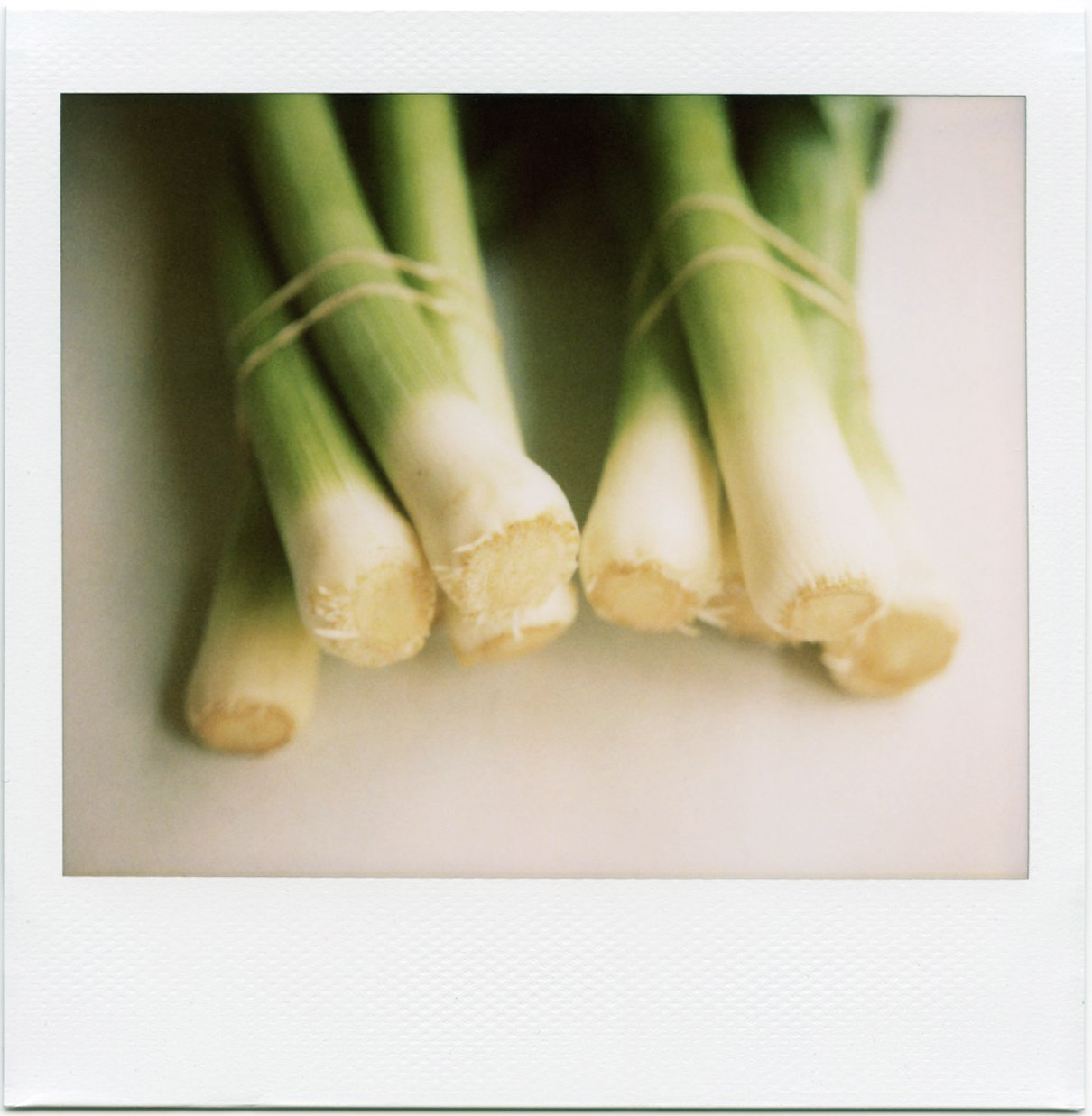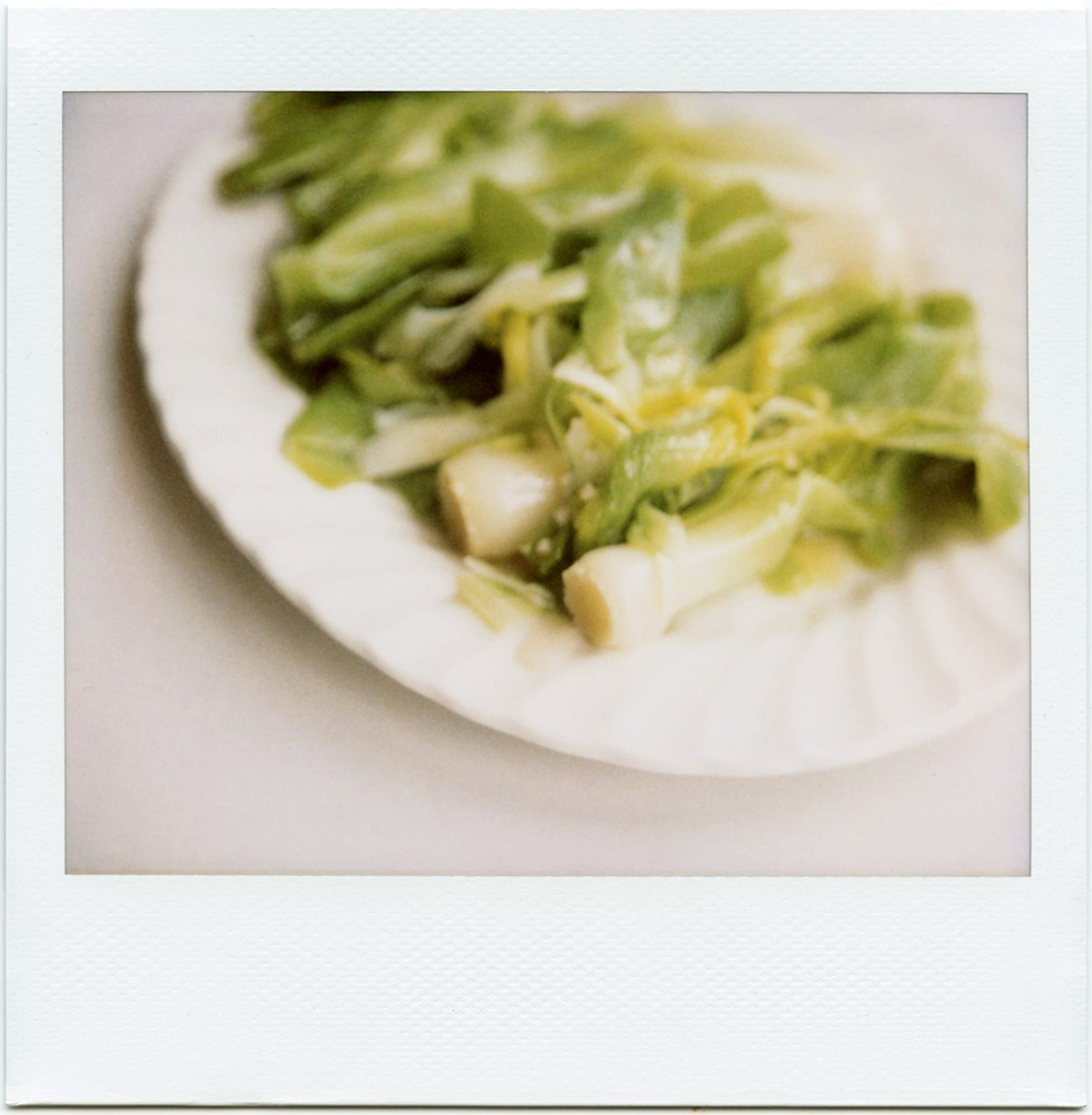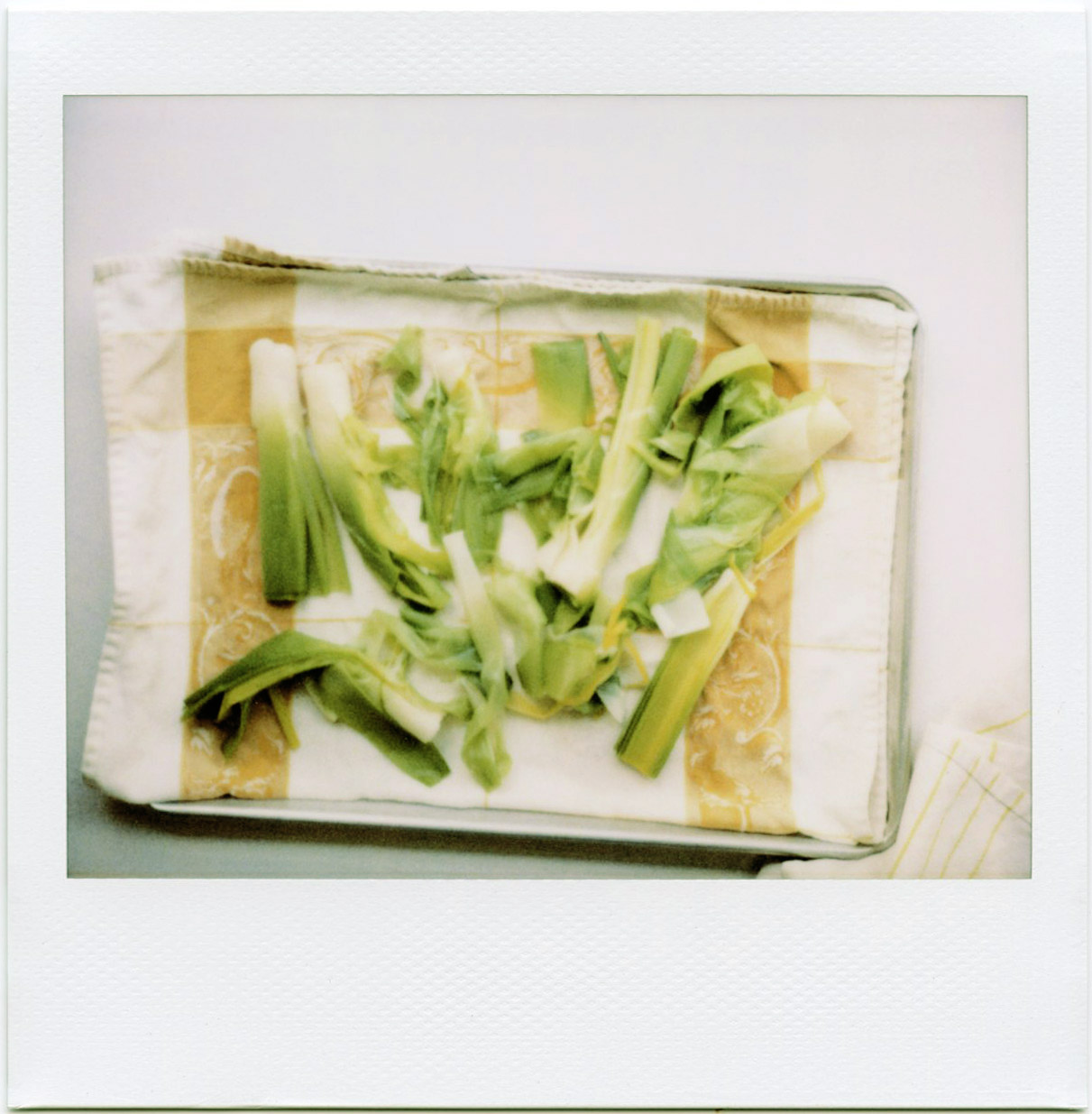Tag: French stuff
Before you know it
Somewhere, a woman named Corentine is serving leeks vinaigrette for dinner. It’s been ten years, but I know it.

Corentine was my host mother in Paris, the year that I was 21 and studying abroad. She had the most magnificent name I had ever heard and something a little Jane Birkin, just a little, about her looks. Whenever someone asks me how I learned to cook or how I got into food, I usually credit my parents, but I should also credit Corentine. She and I didn’t have a lot in common, but food was enough, and we seized it. I ate at her table for six months, and she taught me what she thought I should know. She taught me how to eat cheese, how to make vinaigrette from scratch, and how to shell and snap the head from a whole cooked shrimp. She also taught me how to peel an apple in one long, curling, ribbon-like strip, which, it turns out, I still cannot actually do. Perhaps most importantly, she taught me that a plain butter cake with pears, served on a very cold night, can feel like some kind of miracle. She also taught me about leeks. Poireaux, she said.
I’d never thought about leeks before. I’m sure I grew up eating them in things, and certainly in potato leek soup, but I’d never paid attention. I’d certainly never eaten them the way she served them: on their own, as poireaux vinaigrette, steamed to a degree of doneness best described as pleasantly comatose and then sent out on a platter, towing a gravy boat of vinaigrette closely behind. She had two little boys, ages seven and nine, or maybe nine and eleven, I can’t remember, and they used to fight over the sweet white part closest to the root. I couldn’t believe that they actually seemed to know something about vegetable anatomy, much less cared enough to call dibs. I couldn’t believe how much I liked those leeks.

Behold: a mess of leeks vinaigrette, with emphasis on mess. (Corentine’s plating was much neater – as, for the record, was her hair.) I can’t believe it’s taken me this long to write about this dish. In the abstract, and particularly said aloud, its name sounds like some sort of unusual plumbing problem, but leeks vinaigrette is a classic, a very common first course in French kitchens. You’ve probably heard of it. Maybe you’ve tried it. It’s one of those concepts that slips quietly into your repertoire, and before you know it, ten years have gone by, and you’ve forgotten the ages of the sons of the woman who taught it to you, and you’re about to turn 32, not 22, and still, you’re making that dish. I’m still making leeks vinaigrette. Sometimes as often as once a week.
Leeks are harvested year-round in some places, but I usually think of them as a cooler weather vegetable. (In the summer, if the temperature gets too hot, they can wind up with thick, woody cores.) They showed up at the farmers’ market here a few weeks ago, and I pounced on them. They’re still young and skinny, about the same diameter as a bottle cap, and they’re very sweet, which makes them ideal for simple preparations like leeks vinaigrette. We put them on the menu for our family dinner at Delancey on August 31, and with the help of our friend Olaiya, who was cooking with us that night, we tried something a little different.

Usually I would just steam the leeks, blot them to get rid of excess water, and then lay them out on a plate and drizzle them with dressing, à la Corentine. But this time, we decided to boil them in big pots of salted water, both to cook them faster – we had 40 people to feed – and to infuse them with some seasoning. Then, while they were still hot, we tossed them with a good amount of vinaigrette, hoping that they would absorb it as they cooled. Rather than tasting like plain leeks topped with vinaigrette – which tastes fine; don’t get me wrong – these tasted like a third, even finer thing: leeks fused with vinaigrette, leeksandvinaigrette, rich and saucy. We served them warm, topped with a little more vinaigrette, chopped hard-boiled egg, and chopped bacon, and it was so good, so properly early fall-like, that I made it again yesterday. Only without the egg and bacon, because I got lazy. Either way, I think you’ll like it.
Leeks vinaigrette
I’ve written this recipe with wiggle room on the quantities of vinegar and mustard, and you should feel free to tweak it to your liking. It’s hard to go wrong, and anyway, your vinegars, oils, and leeks may taste different from mine. Whatever you do, it’s important to use a good, strong mustard for this dressing. I like the brands Edmond Fallot, Roland Extra Strong, and Beaufor. Keep in mind, too, that once a jar of mustard has been opened, it slowly loses its potency, so if you’ve had your jar for a while, you might want to invest in a new one.
Optional garnishes:
In a small bowl, whisk together 2 tablespoons white wine vinegar, 1 teaspoon mustard, and salt. Gradually whisk in the olive oil, mixing until emulsified. Taste. This dressing should be fairly bright, and the mustard flavor should come through, but not too powerfully. Adjust as needed with vinegar, mustard, and/or salt. When you’re happy with it, add the shallots, whisking to blend. Set aside. Be sure to taste it again later, just before tossing it with the leeks, so that if necessary, you can adjust it according to their flavor.
Lay a clean kitchen towel on the counter near the stove. Bring a large pot of water to a boil, and salt it well. It should taste like sea water.
While the water comes to a boil, prepare the leeks. Trim away the hair-like roots, but take care not too cut in too far; you want the leek to stay intact. Cut off and discard the dark green leafy parts, leaving just the white and pale green stalk. Starting about 1 inch from the root end, so as to keep the white part intact, cut lengthwise down the middle of the leek. (If you were to splay the cut leek open, it should look like a stubby Y.) Wash the leeks well under running water, flushing any dirt from between the layers. Boil until they are very, very tender and yield easily to a knife. Their color will become muted, and they may be falling apart a little. That’s okay. To be sure they’re done, taste one: it should taste sweet, with no trace of raw flavor. The amount of time that this will take depends on their size, but it will probably take longer than you think. Ten minutes is a good bet.
Draining the leeks as well as you can, transfer them to the kitchen towel on the counter. Blot and press them dry. (Don’t burn yourself!) While they’re still hot, put them in a bowl, and toss them with a generous amount of the dressing. Allow to cool at least slightly before serving.
Serve warm or at room temperature, with more dressing spooned on top and a pinch or two of salt. If you want to make it a little fancier, garnish with bacon and/or chopped egg.
Yield: 3 to 4 servings (as a side dish or first course)

